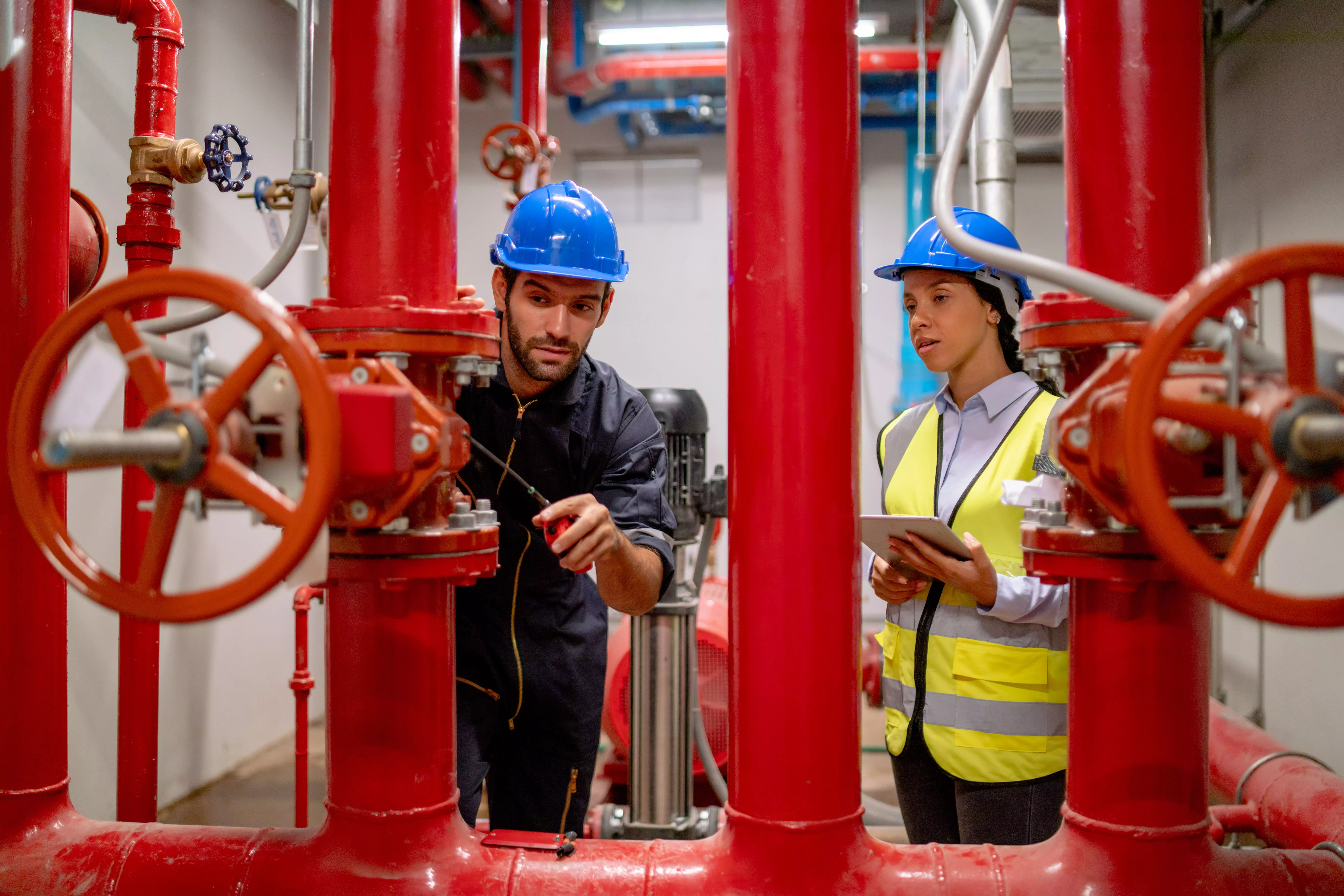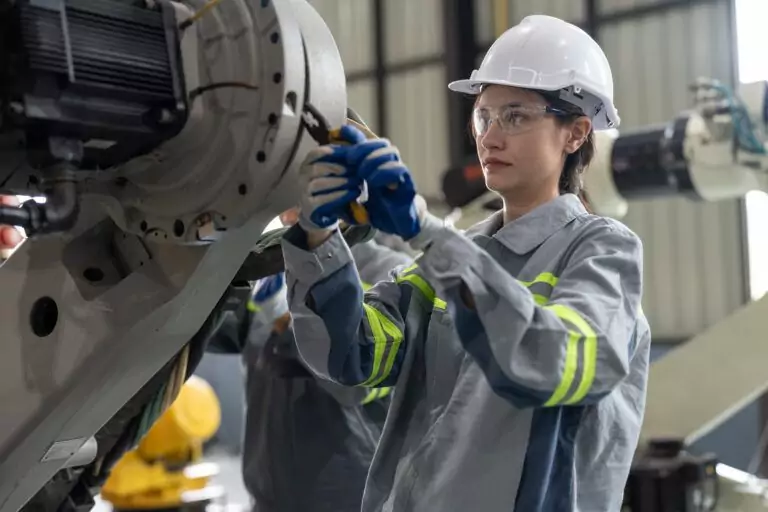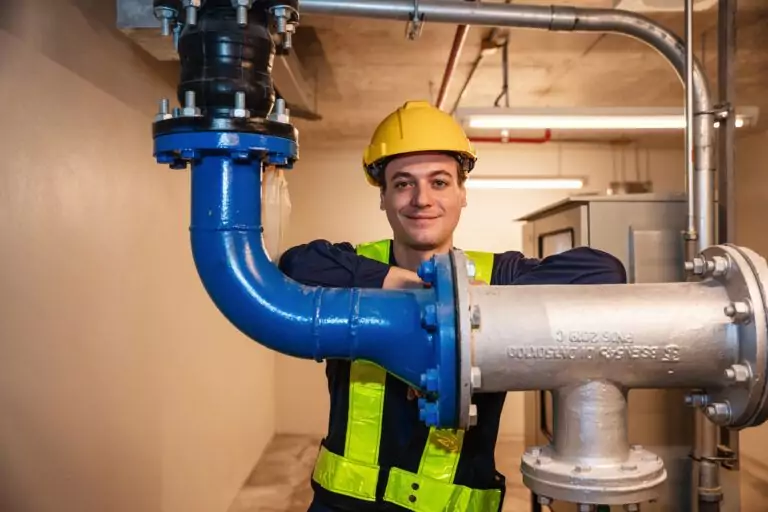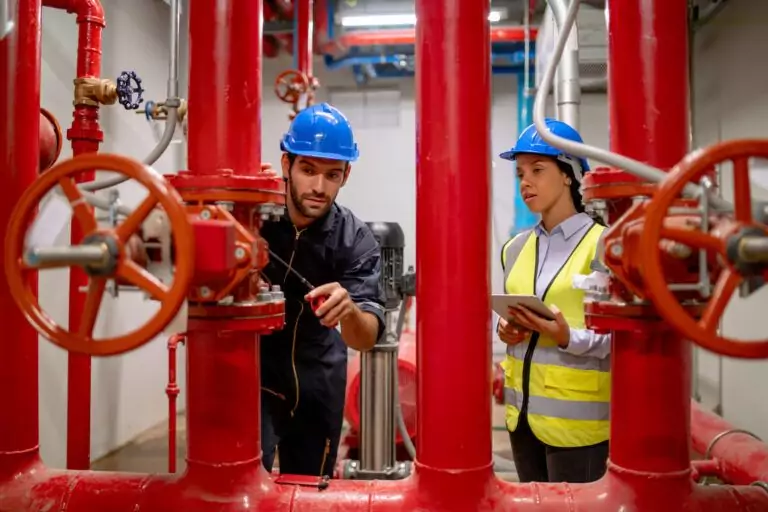Getting clear answers about breaking into piping design? Incredibly frustrating. Most career advice is vague and unhelpful.
“Get an engineering degree.” “Learn CAD software.” Zero actual steps. No realistic timeframes. Nothing about what employers really want.
This is incredibly frustrating. Career counsellors with zero industry experience are giving poor advice to people who’ll waste years following it.
Strong demand exists for piping designers across petrochemical facilities, mineral processing plants, renewable energy projects, and carbon capture systems. But employers want the whole package: modern digital tools, multi-disciplinary collaboration, and sustainability awareness.
This guide provides a complete roadmap from wherever you’re starting to landing your first piping design position. Expect to invest 2-4 years in education and skill building, depending on your starting point and chosen pathway.
These are actionable steps, not vague inspiration. You’ll understand what to learn, how to build real skills, where to find opportunities, and what realistic timeframes look like.
Disclaimer: Educational requirements, certification standards, job market conditions, and salary ranges change frequently and vary by region and employer. All information reflects 2025 North American market conditions and should be verified with educational institutions, employers, and professional organisations in your specific location before making career or educational investments.
What Piping Designers Actually Do and Whether This Career Fits You
Know what you’re getting into before investing time and money. We’ve seen too many people discover two years in that they hate the actual work.
The Real Day-to-Day Work
Creating 3D models and 2D drawings of piping systems for industrial facilities is core work. You’ll route pipes connecting pumps, vessels, heat exchangers, and storage tanks. Every line needs proper sizing, material specification, and support consideration.
Coordinating across multiple engineering disciplines is constant. Process engineers tell you flow rates and pressures. Structural engineers design supports. Electrical engineers need space for cable trays. Instrumentation engineers specify valve types. Your piping must accommodate everyone’s requirements while meeting code standards.
Look, this coordination is where most junior designers struggle. Can’t be a lone wolf in this field.
Working with codes and standards means following rules. You’ll reference piping codes and client standards constantly throughout your work.
Problem-solving routing challenges in congested environments is where the job gets interesting. That pipe needs to reach that equipment, but there’s a cable tray overhead, another pipe in the way, and structural steel where you wanted supports. Find solutions.
Balancing technical requirements with cost and schedule constraints means your perfect design might cost too much or take too long to build. Shorter pipe runs save money. Standard fittings ship faster than custom ones. Smart designers deliver functional solutions that meet project budgets.
Self-Assessment Before You Commit
Do you enjoy technical problem-solving and spatial thinking? Piping design requires visualizing three-dimensional arrangements, anticipating conflicts, and developing creative solutions within constraints.
Are you comfortable learning complex software tools? Modern 3D modelling platforms have steep learning curves. You’ll invest significant time becoming proficient. Resistance to technology limits your career. Period.
Can you work well in team environments? Solo workers struggle in integrated engineeringThe process of integrated engineering involves multiple engineering disciplines working in conjunction with other project disciplines to e.... You’ll coordinate constantly, compromise on competing requirements, and communicate across technical specialties.
Are you detail-oriented and committed to accuracy? Mistakes cause expensive construction problems. Material specifications, dimensions, and weld counts must be correct. Sloppy work doesn’t survive.
Do you want job stability and growth potential? Industrial facilities always need piping systems. Demand remains steady through economic cycles. Experienced designers find consistent opportunities.
Honest evaluation of fit prevents wasted effort. Not everyone belongs in piping design. That’s fine.
Educational Pathways – What Actually Works vs What Wastes Time
Two main paths work for most people entering this field. You have to focus on what actually matters.
Engineering Technology Diploma Programs – Strong Route for Many People
Two-year engineering technology programs with piping design specialization provide focused, practical training. These programs emphasize hands-on skills, software proficiency, and applied knowledge.
This works well for many people entering the field. Companies hire dozens of diploma grads. They’re job-ready faster than four-year degree holders in many cases. Plus they saved significant time and education costs.
Mechanical engineering technology with CAD emphasis works well for piping design careers. Curricula cover technical drawing, 3D modeling, engineering materials, manufacturing processes, and applied mechanics. Programs emphasise practical application over theory.
Advantages include faster career entry, lower total education costs, and direct pathway to employment without unnecessary coursework.
Community colleges and technical institutes offer relevant programs in most industrial regions. Program quality and industry reputation vary significantly. Research local programs, talk to graduates, and understand employer perceptions before enrolling.
Programs in Calgary, Houston, and other industrial centers often maintain strong employer relationships and placement records.
Engineering Degree Pathways – Consider Your Long-Term Goals
Four-year mechanical or chemical engineering degrees provide broader technical education. But here’s the reality: they’re not required for most piping designer positions, though specific employers may have different requirements.
You’ll spend additional time learning theoretical content that may not apply directly to design work. Engineering degrees open additional long-term opportunities if you want to become a P.Eng eventually or move into broader engineering roles. For many people focused specifically on piping design careers, they represent an unnecessary time and financial investment.
Look, this doesn’t mean degrees lack value. Just that many successful piping designers don’t need them. Be strategic about your specific goals.
When degrees make sense: pursuing professional engineering licensure, moving into engineering roles beyond design, or accessing senior management positions that prefer degree credentials.
Alternative Routes That Actually Work
Transitioning from drafting or CAD technician roles provides natural entry for people with existing technical drawing skills. Add piping-specific knowledge, learn 3D plant design software, and understand codes. Many designers start in drafting.
Moving from field experience in construction or fabrication brings valuable practical perspective. We hired someone last year who came from fabrication. One of our strongest junior designers. Understands constructability better than most senior people.
Self-taught paths with online courses and portfolio building work for motivated individuals. Free software trials, online tutorials, and practice projects can work. Harder route but possible.
Career changers from unrelated backgrounds need realistic assessment of transferable skills and necessary new learning. Expect substantial training investment regardless of previous career.
Skills You Actually Need Before Your First Job
Before diving into specific requirements, understanding the essential skills piping designers need to thrive in modern industrial projects and complex engineering environments provides context for prioritizing your learning efforts. Employers expect certain baseline competencies from entry-level designers. You need foundational knowledge, software proficiency, and professional skills before landing that first position.
Technical Knowledge Foundation
Engineering basics, including fluid mechanics and thermodynamics, provide context for piping design decisions. Understand pressure, flow, temperature effects, and how fluids behave in piping systems. Applied concepts, not advanced theory.
Understanding piping codes and standards begins with the codes applicable in your region. Many North American industrial projects reference ASME B31.3 for process piping and B31.1 for power piping. Canadian jurisdictions often require CSA B51 for pressure piping, CSA Z662 for oil and gas pipeline systems, or other standards depending on provincial regulations and project requirements. Know when each applies, understand major requirements, and learn where to find specific provisions. Familiarity, not memorization.
Note: Always verify which codes and standards apply in your specific jurisdiction and for your target employers before investing heavily in learning specific standards.
Material properties and selection criteria affect every design. Carbon steel, stainless steel, alloy materials. Learn temperature limits, corrosion resistance, pressure ratings, and cost implications.
Pipe stress analysis concepts help you recognize which systems need formal evaluation. Thermal expansion, heavy components, seismic loads. Understand threshold criteria even if you’re not running analysis yourself.
Reading and interpreting P&IDs and engineering drawings is basic stuff. Piping and instrumentation diagrams show process flow, equipment connections, and control schemes. You’ll reference P&IDs constantly.
Equipment layout principles affect everything downstream. Maintenance access, process flow logic, construction considerations, and cost implications. Smart layout prevents routing problems later.
Software and Digital Tools – This Matters Most Now
3D plant design software proficiency is non-negotiable. AVEVA E3D and PDMS dominate large industrial projects. AutoCAD Plant 3D appears on many mid-sized work. SmartPlant 3D exists in some companies.
Expect steep learning curves for complex plant design platforms. These aren’t simple CAD programs. Intelligent modeling, specification-driven design, database integration, and multi-discipline coordination all require significant training time. Budget months of dedicated practice.
Despite what everyone says about needing AVEVA experience, many mid-sized projects use Plant 3D. Don’t obsess over AVEVA until you’re targeting big EPCs.
2D CAD for producing deliverable drawings remains necessary. AutoCAD or similar platforms complement 3D modeling tools.
Basic understanding of pipe stress analysis software like CAESAR II helps even if you’re not running analysis. Understand what the software does, what results mean, and how findings affect design decisions.
Collaboration platforms and document management systems are standard on modern projects. Learn common data environments, version control concepts, and digital workflowThe digital workflow involves the use of digital tools instead of paper-based manual systems to perform the tasks that comprise a business w... practices.
Soft Skills That Matter
Communication ability with technical and non-technical audiences matters more than many new designers realize. Explain design decisions to engineers, talk to construction crews about buildability, and present options to project managers.
Problem-solving and critical thinking separate designers who add value from those who just follow instructions. When ideal solutions aren’t feasible, find alternatives. When problems arise, troubleshoot systematically.
Attention to detail is non-negotiable. Dimensions, material specifications, weld counts, and drawing notes must be correct. Mistakes cause field problems and damage your reputation.
Adaptability to changing project requirements reflects real project reality. Requirements change, client preferences shift, new information emerges. Rigid designers struggle.
Team collaboration across multiple disciplines determines project success. Coordinate with process, structural, electrical, and instrumentation engineers. Recognise competing requirements and find workable solutions.
Continuous learning mindset keeps your skills current. Software updates, new code editions, emerging technologies, and changing industry practices all require ongoing learning.
Building Your Portfolio – What Actually Gets You Hired
Look, recruiters see hundreds of resumes listing the same courses. You need tangible evidence of skills. Portfolio matters significantly more than your transcript.
Creating Practice Projects
Develop sample piping designs for common scenarios. Design piping for a simple heat exchanger installation. Route multiple lines from a pump to process equipment. Create a pipe rack layout with 10-15 lines.
Create portfolio-quality isometric drawings and 3D models that look professional. Clean, accurate drawings with complete information. Well-organized 3D models with proper specifications. Quality matters more than quantity. Three excellent examples beat ten mediocre ones.
Document your design process and decision-making. Write brief descriptions explaining material selections, routing choices, and code compliance considerations. Show systematic approach, not just final results.
Build projects that show software proficiency across multiple tools. 3D model in one software, isometrics from another, general arrangements in 2D CAD. Breadth of capability matters.
Gaining Practical Experience
Internship and co-op opportunities during education provide invaluable real project exposure. Engineering firms and owner companies regularly hire student interns. These positions often lead to full-time offers after graduation.
Entry-level drafting positions serve as stepping stones. Junior CAD technician or drafting support roles build software proficiency and expose you to real project work. Internal transitions from drafting to design happen regularly.
Personal projects using free or student software licenses develop skills when other opportunities aren’t available. Many software vendors offer free student versions or trial licenses. Use them to build practice projects.
Part-time or contract work builds real-world experience for career changers or people building skills while working other jobs.
Certifications – Limited Value for Most Positions
CAD software certifications from manufacturers show proficiency. Autodesk certifications for AutoCAD or Plant 3D, AVEVA certifications for E3D. These verify skills but aren’t required for most positions.
Most certifications provide limited value. Don’t invest heavily in certificates unless your target employer specifically requires them.
Professional Technologist or similar regional certifications exist in some areas. Value varies by local market. Research before investing.
Finding and Landing Your First Position
Skills and education mean nothing until you land that first position. Target your search strategically rather than applying randomly to hundreds of postings.
Where to Look
Engineering firms including integrated engineering companies, EPCs, and owner-operators all hire piping designers. Integrated firms like Vista Projects offer multi-discipline exposure. EPCs focus on construction project execution. Owner companies maintain in-house design capabilities.
Geographic markets with strong industrial activity offer more opportunities. Calgary’s energy sector, Houston’s petrochemical hub, and international markets like Oman. Job density varies significantly by region.
Job market is challenging in some regions right now. Calgary has more opportunities than many other locations. Location matters significantly for job search success.
Traditional energy sectors provide steady opportunities. Emerging green energy opportunities include carbon capture, renewable energy, and biofuels projects. Balance stability with growth potential.
Understanding job titles helps search work well. Piping Designer, Piping Drafter, Piping Engineer, Mechanical Designer, Plant Designer. Different titles describe similar work. Search broadly.
Application Strategies
Highlight relevant technical skills and software proficiency prominently. List specific software tools you know. Mention codes and standards you understand. Quantify project exposure.
Include portfolio samples or links to show capability. Link to online portfolio, mention samples available upon request, or include thumbnails of best work.
Tailor applications to specific job requirements rather than sending identical materials everywhere. Reference specific project types the company handles. Mention relevant software they use.
Follow up appropriately without being pushy. One polite follow-up email 1-2 weeks after applying. Professional persistence, not desperation.
Interview Preparation
Understanding the specific interview questions in piping design helps you prepare effectively and demonstrate your capabilities confidently. Prepare for technical questions about codes, software, and design principles. Review applicable piping code basics for your region. Refresh software knowledge. Think through how you’d approach common design scenarios.
Bring portfolio samples to interviews. Printed examples or tablet/laptop with digital samples. Walk interviewers through your work, explain your thinking, and show capabilities.
Show problem-solving ability through scenario questions. When asked about routing challenges or design conflicts, explain your systematic approach. Show reasoning, not just final answers.
Ask insightful questions about projects, tools, and team structure. What project types does the team handle? What software platforms do they use? How do they support new designer development?
Realistic Timeframes and Salary Expectations
Understanding actual timelines and compensation helps you plan realistically.
How Long Each Stage Takes
Educational pathway timeframes depend on your chosen route. Part-time study extends timelines significantly.
Skill development and portfolio building typically requires six to twelve months alongside or after formal education. Software proficiency needs dedicated practice beyond classroom hours.
Job search duration varies widely. Strong markets might yield offers within one to two months. Slower markets can extend searches to six months or longer. Location and timing matter enormously.
Time to become proficient in first jobs usually takes one to two years. Initial months involve learning company standards and project procedures. Genuine proficiency develops gradually.
Realistic total timeframe from starting education to confident professional typically spans three to six years depending on pathway and starting point, though individual timelines vary significantly based on prior experience, learning pace, and available opportunities.
Salary Ranges – Let’s Be Honest
Entry-level compensation varies significantly by region, employer, and economic conditions. Let’s be honest about what to expect. North American markets in major industrial centers typically offer approximately $45,000 to $65,000 annually for new graduates with technology diplomas. These are approximate 2025 ranges for major industrial centers and vary significantly by region, employer, and economic conditions.
Entry-level compensation is modest. Don’t believe recruiters promising $80k entry-level positions. Those numbers aren’t realistic for most markets and entry-level roles.
Intermediate designer salary progression generally ranges from approximately $60,000 to $85,000 annually depending on location and industry sector. Individual results vary significantly based on specific market conditions, employer, and economic factors.
Senior designer compensation often ranges from approximately $80,000 to $110,000 or more annually. Individual compensation varies significantly based on market, specialization, and employer. Lead designers and technical specialists can exceed these ranges in strong markets.
Calgary and Houston markets generally offer higher compensation than smaller centres. Petrochemical and oil and gas projects often pay somewhat higher than other sectors.
Important: Compensation varies enormously based on employer, project type, economic conditions, and regional market factors. These ranges represent approximations for major industrial centers only. Verify with current local market data for your specific region before making decisions.
Financial Planning
Education costs vary significantly by institution and location. Community college technology programs often range from approximately $10,000-$25,000 total depending on location and program length, though costs vary significantly by institution and region. Verify current tuition and fees with specific schools before making decisions. Four-year degrees typically cost substantially more.
Someone who invested heavily in a mechanical engineering degree and now works as a piping designer earning similar compensation to diploma graduates. For that person’s specific career path, the extra investment and time didn’t provide clear advantages.
Supporting yourself during training and job search requires realistic planning. Can you work part-time while studying? Do you have savings to cover living expenses? Plan thoroughly before quitting existing employment.
Career change financial planning for mid-career transitions demands careful analysis. You’re leaving established income for uncertain entry-level compensation. Runway savings, family support, and part-time income all bridge gaps.
Long-term earning potential justifies education investments for most people. Piping design offers stable income and growth potential over 30-40 year careers.
Succeeding in Your First Job and Building Your Career
Landing the job is just the beginning. Your first year establishes reputation, builds foundational competence, and sets the trajectory for career growth.
First Year Strategy
Learn company-specific standards, templates, and typical details. Every company has preferred approaches and established procedures. Study existing work. Ask questions. Understand why things are done certain ways.
Build relationships with experienced designers and engineers. Identify strong performers. Ask thoughtful questions. Show genuine interest in learning. Most experienced professionals help newcomers who show respect and work ethic.
Seek feedback actively and implement improvements. Don’t wait for annual reviews. Ask supervisors for specific feedback on your work. What should you improve? Where are you strong? Act on guidance received.
Take on progressively more complex assignments. Start with simpler tasks. Execute them well. Volunteer for slightly harder work. Build a track record before tackling genuinely complex challenges.
Develop a reputation for quality, accuracy, and reliability. Deliver work on time. Check thoroughly before submitting. Respond quickly to questions. Be someone teammates trust.
Career Progression
Intermediate designer roles with increased autonomy typically emerge after 3-5 years. Handle equipment areas independently. Coordinate directly with other disciplines. Solve routine problems without supervision.
Senior designer positions requiring 8+ years involve complex technical challenges, design leadership, and mentoring responsibilities. Lead piping scope on major projects. Review others’ work. Make difficult engineering judgments.
Time alone doesn’t create seniority. Performance and capability development matter most.
Specialization in high-demand areas including sustainability, advanced analysis, or digital tools creates valuable expertise. Become the go-to person for carbon capture systems, digital asset managementDigital asset management (DAM) is a business process to organize, store, and process digital information related to real-world assets. In th..., or complex stress analysis.
Building Your Professional Network
Career success depends partly on who you know, not just what you know. Professional relationships create opportunities and provide learning.
Identify potential mentors within your company. Look for people whose approach and values you respect. Build genuine relationships through repeated positive interactions.
Professional organizations and local chapter involvement connect you with piping professionals beyond your workplace. ASME sections, local engineering societies, and industry groups offer networking opportunities.
LinkedIn and professional social media engagement builds visible professional presence. Share relevant content. Comment thoughtfully on industry discussions. Connect with other piping professionals.
Stay connected with former colleagues and classmates. People move between companies. Today’s coworker becomes tomorrow’s client or employer.
Take Your First Step Today
The pathway from education through career growth requires sustained commitment but offers strong rewards. Job stability, decent compensation, continuous learning, and contributing to infrastructure and sustainability challenges.
Growing opportunities exist in green energy and digital transformation. Carbon capture, renewable energy, and biofuels projects all need piping designers. Digital asset management and modern workflows create new specialisations.
Your specific first steps depend on current situation. Students should research educational programs and connect with practicing professionals. Career changers need to assess transferable skills and identify necessary training. Technicians should develop formal design knowledge complementing field experience.
Start with small, concrete actions rather than waiting for perfect conditions. Research one educational program this week. Connect with one piping designer on LinkedIn. Complete one online tutorial. Build momentum through consistent small steps.
Companies like Vista Projects, with 40 years of engineering excellence across petrochemical, mineral processing, biofuels, and emerging energy markets, need designers who combine technical competence with collaborative ability and sustainability awareness.
Take your first step today. Research programs. Make connections. Start learning. The journey from wherever you are now to confident piping designer is clearer than it seemed at the start of this guide.
Disclaimer: This career guidance is for informational purposes only and should not be considered employment, educational, or financial advice. Job market conditions, salary ranges, educational requirements, and certification standards change frequently and vary significantly by region and employer. References to specific codes reflect common North American practice, but Canadian projects may be governed by CSA standards, provincial regulations, and regional requirements. Always verify current information with educational institutions, employers, professional licensing bodies, and financial advisors in your jurisdiction before making career, educational, or financial decisions.









